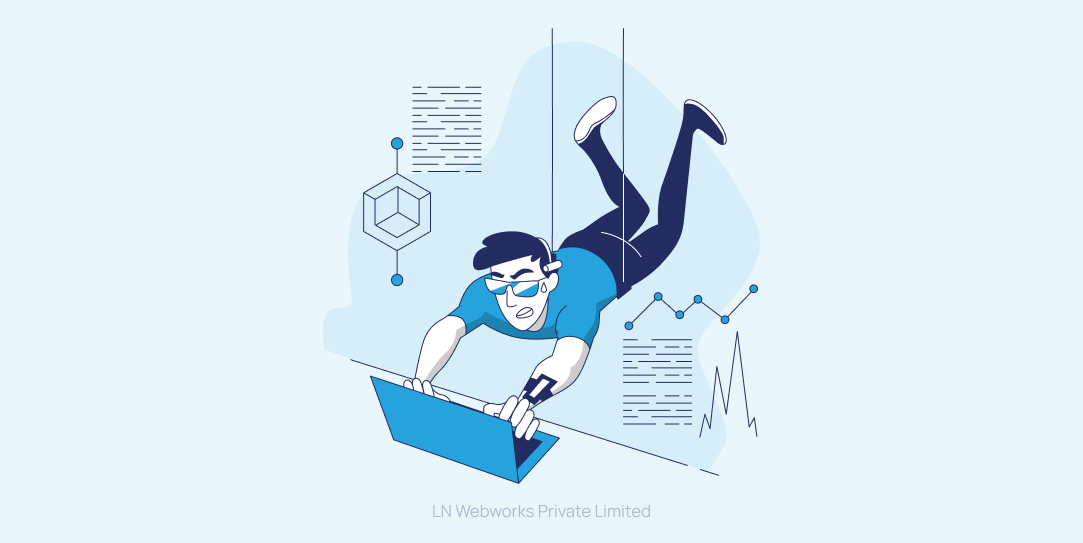Top Web Development Challenges & How To Tackle Them?

Building and maintaining a website isn’t a piece of cake. You get tormented by challenges at every step of the process. Bugs and unexpected crashes are just the tip of the iceberg. Ask web development companies and they’ll elaborate on how they struggle against enormous website development challenges to create phenomenal websites for their clients. As captivating sites are a product of passing through these challenges, you ought to face them no matter what. So, no use fussing and fuming about them. Rather, it is better to get acquainted with these web development challenges beforehand and be prepared to spring into action and slew them as they appear.
Here, we’ll explore 5 major web development challenges you need to beware of in 2023 and actionable tactics to overcome them.
5 Common Web Development Challenges & How To Overcome Them!
1. Cross-browser compatibility
One of the biggest pain points associated with web development is cross-browser compatibility. In a digital world where people can access your website through various browsers, it is imperative to build one that is compatible with all types of browsers.
If your site looks fantastic in Google Chrome but loses its charm in Microsoft Edge or other browsers, you are in for a disaster. After all, people have different browser preferences. Limited browser compatibility can thus lead to a bad user experience which can prompt visitors to leave your site within a fraction of a second.
This can further prove to be detrimental to your company’s profitability and reputation. In the world of business, laden with ferocious competition, you cannot afford to let that happen. Hence, cross-browser compatibility is a must, and given below are some effective tactics to accomplish it.
- Keep the code simple
A simple code is the key to accomplishing cross-browser compatibility. So, focus on writing a simple code, likely to be friendly with all types of browsers.
- Embed feature detection and Polyfills
Feature detection equips you with the power to determine whether a browser supports particular features or not. In light of this knowledge, you can adjust your site’s functionality accordingly.
When it comes to Polyfills, they are snippets of code that execute a feature on browsers that do not support it by themselves.
- Employ progressive enhancement and graceful degradation
Progressive enhancement enables you to offer a base-level functionality for all devices and adds enhanced functions whenever a browser can support them.
When it comes to graceful degradation, it cuts out non-critical functions whenever a user accesses your site from an older device or browser. This way, they can use your site’s core functionality without breaking themselves against the unsupported features.
2. Website speed and performance
Intriguing research by Google has highlighted that visitors abandon sites that take more than 3 seconds to load. This implies that your site’s speed can have a significant influence on your sales, revenue, and overall reputation.
Given that, building a nimble website is one of the major challenges web development companies face. No doubt, creating a speed-optimized yet well-designed site is a taxing task, but the following strategies can simplify it for you.
- Image compression and optimization
Large image files can impede your site’s loading speed. So, compressing and optimizing them is crucial.
- Cache your web pages
Effective caching enables you to store copies of your site’s web pages on the server. Consequently, it can deliver the required pages quickly when visitors revisit them.
- Reduce the number of page redirects
Page redirects can contribute a fair share in increasing your site’s load time. With every page redirect, your site’s loading time increases incrementally. Hence, it is crucial to remove unnecessary page redirects for enhancing your site’s loading speed.
3. User experience
Phenomenal user experience is a major priority for consumers. According to research, 88% of online shoppers won’t revisit a website if they have a bad experience. This implies that you cannot afford to render a bad user experience no matter what. After all, it can have a disastrous impact on your customer base and the profitability of your organization.
However, it is crucial to note that developing an interactive user interface that renders a fabulous user experience is not easy. It requires deep insights into the preferences of the target audience and a thorough understanding of user interface design principles. In short, user experience is another challenge associated with web development. Here are a handful of tactics to help you effectively deal with it.
- Ensure easy navigation
Nothing beats easy navigation when it comes to offering an incredible user experience. When your visitors get to sail through your website smoothly, they feel delighted to the core. So, make sure to serve everything right in the front.
- Use bullet points to segment key information
Visitors should never have to struggle to grasp information from your site. Bullet points can help them find the appropriate information effortlessly which can in turn significantly enhance user experience.
- Embed captivating designs
The right color scheme and designs can take the user experience to a whole new dimension. Use captivating designs but avoid being too glittery. Besides, heavy design can lead to slow site loading, so do not forget to embed balanced design features that do not impede the performance of your website.
4. Cybersecurity
Cybersecurity is one of the most pressing web development challenges today. Hackers leave no stone unturned to attack business websites as they are the storehouse of sensitive customer data which they can use to their advantage.
According to a study, every 32 seconds a hacker attacks someone. As business organizations are their major targets, needless to say, a majority of these attacks are centered around them.
With the sword of cybercrime looming over every entrepreneur’s head, web development companies are trying to mitigate this challenge with ingenious cybersecurity practices. Given below are some of them.
- Biometric two-factor authentication
Every individual possesses unique biometric traits. This makes biometric two-factor authentication one of the best security practices you can follow. As biometric traits cannot be transferred or obtained digitally, biometric two-factor authentication prevents unauthorized access to sensitive resources to a great degree.
- Regular security updates
Web development companies release regular security updates in alignment with the latest advancements in the field and the emergence of new cyber threats. Installing these updates as and when they are released is the key to ensuring top-notch cyber security.
- SSL certification
SSL certification is a potent means of protecting sensitive user data, identifying cyber threats, and gaining customer trust. So, do not forget to get an SSL certification for your website.
5. Support and maintenance
If you think that once a website is live and running, the challenges are over, you may have to rethink it. In order for your site to keep functioning in a top-notch condition, regular maintenance is a must.
We live in a world where technology changes every day. If you aspire to achieve enduring success, you’ll have to upgrade your website in line with the latest technological advancements. You cannot afford to run an outdated website as it will only give a competitive advantage to your competitors.
Besides, regular maintenance is also the key to averting any novel cybersecurity threats that might hijack your site. It can also help you identify the potential loopholes that might have slithered under your nose.
As matching strides with technological advancements requires a bit of work, website maintenance is quite challenging. However, the following strategies can keep you on the right track and simplify things for you.
- Consistent upgrading
Whether it is a content management system or your site’s security features or something else, regularly upgrading everything is the key to website maintenance. Whenever a new update is released, proactively install it to keep your site running in fine fettle.
- Check for broken links
Broken links refer to pages that can no longer be accessed by visitors. Whenever they try to access them, the server displays an error. The problem with broken links is that they can contribute to a bad user experience, impact your SEO ranking, and lead to a high bounce rate. This makes it crucial for you to check broken links and fix them.
- Monitor your site’s uptime
Monitoring your site’s uptime helps you ensure that it is seamlessly available to visitors at all times. Downtime is associated with a bad user experience and loss of revenue which makes it imperative to reduce it to the greatest degree possible.
Conclusion
Web development is associated with multiple challenges such as cross-browser compatibility, site speed and performance, cybersecurity, user experience, and support and maintenance. You cannot sidestep these challenges as the way to come up with a phenomenal site is through them. However, skillfully dealing with these issues requires a knack for problem-solving and a deep understanding of the web development cycle.
Given that, it is advisable to hire an eminent web development company to do the chore for you. LN Webworks is an esteemed web development company with an experienced team of web developers adept in mitigating web development challenges. In light of their history of rendering phenomenal services, you can invest your trust in them without any second thoughts. Contact us today.
